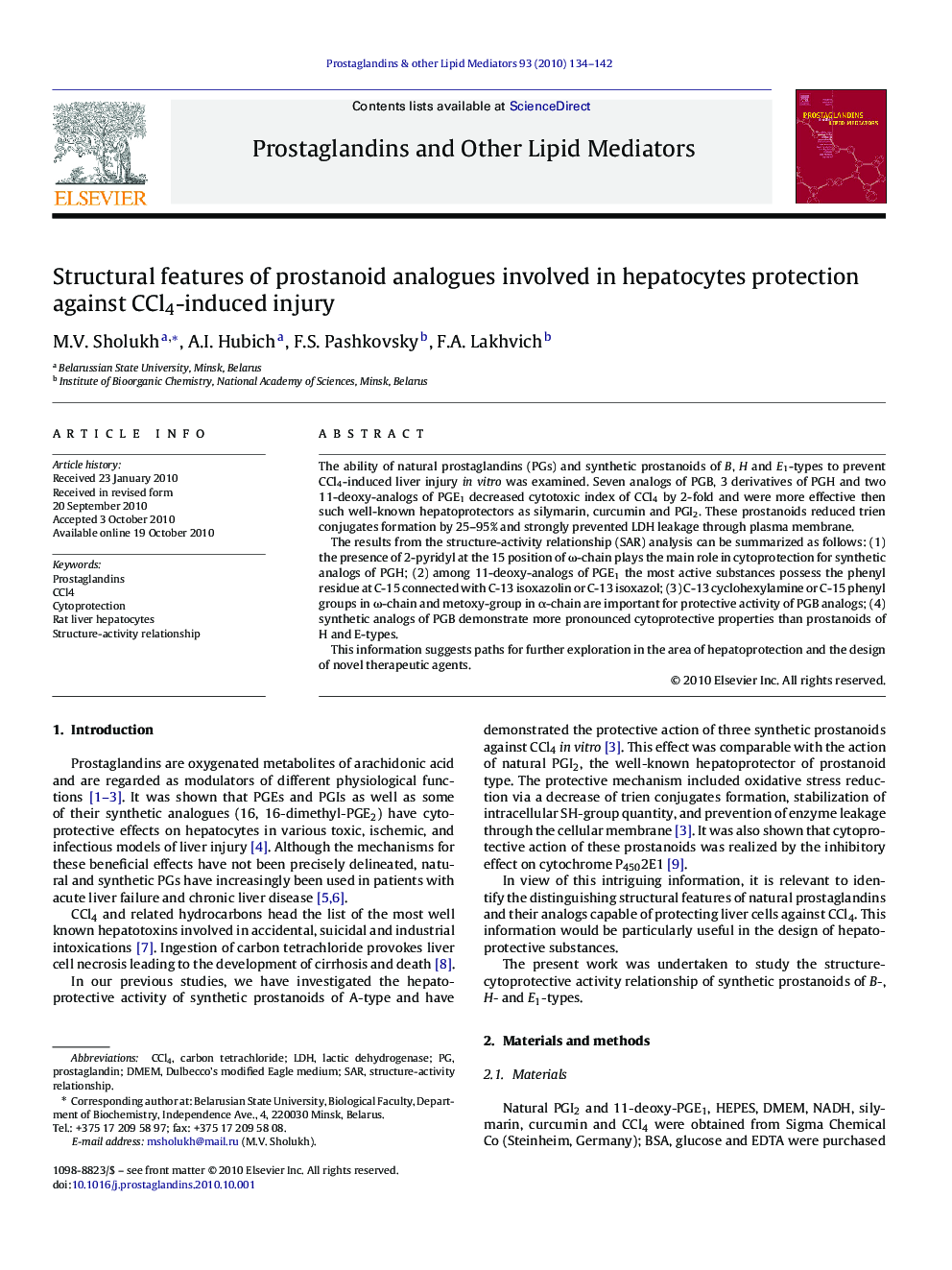| Article ID | Journal | Published Year | Pages | File Type |
|---|---|---|---|---|
| 2019687 | Prostaglandins & Other Lipid Mediators | 2010 | 9 Pages |
The ability of natural prostaglandins (PGs) and synthetic prostanoids of B, H and E1-types to prevent CCl4-induced liver injury in vitro was examined. Seven analogs of PGB, 3 derivatives of PGH and two 11-deoxy-analogs of PGE1 decreased cytotoxic index of CCl4 by 2-fold and were more effective then such well-known hepatoprotectors as silymarin, curcumin and PGI2. These prostanoids reduced trien conjugates formation by 25–95% and strongly prevented LDH leakage through plasma membrane.The results from the structure-activity relationship (SAR) analysis can be summarized as follows: (1) the presence of 2-pyridyl at the 15 position of ω-chain plays the main role in cytoprotection for synthetic analogs of PGH; (2) among 11-deoxy-analogs of PGE1 the most active substances possess the phenyl residue at C-15 connected with C-13 isoxazolin or C-13 isoxazol; (3) C-13 cyclohexylamine or C-15 phenyl groups in ω-chain and metoxy-group in α-chain are important for protective activity of PGB analogs; (4) synthetic analogs of PGB demonstrate more pronounced cytoprotective properties than prostanoids of H and E-types.This information suggests paths for further exploration in the area of hepatoprotection and the design of novel therapeutic agents.
Research highlights▶ 2-pyridyl at the C-15 plays the main role in cytoprotection for PGH analogs. ▶ C-15 phenyl and C-13 isoxazolin (isoxazol) are crucial for PGE1 analogs activity. ▶ C-13 cyclohexylamine or C-15 phenyl are important for PGB analogs activity. ▶ PGB analogs are more active cytoprotectors than prostanoids of H and E-types.
